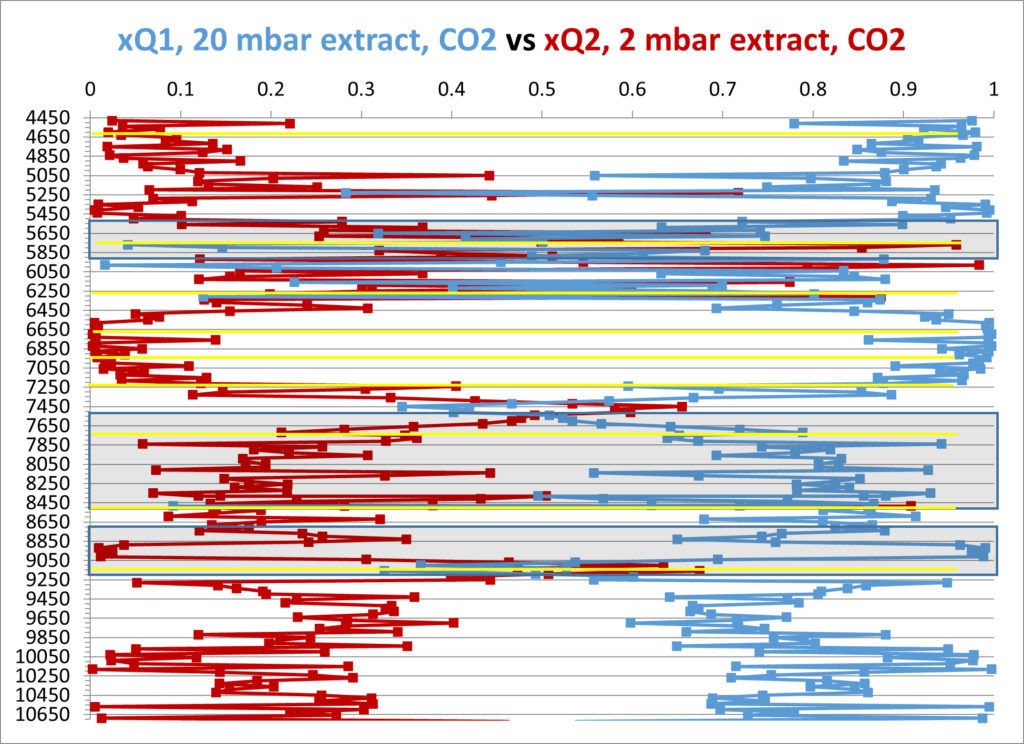SAGE Record 054, Smith et al.
Smith, M. P., C. M. Smith, P. S. Gordon, and T. M. Smith, 2022, Alternating CO2–phobic and CO2–philic strata determined using rock volatiles stratigraphy: Evaluating CCS reservoir and seal quality: SAGE Record 054, 2 p. + supplemental material, <http://sagetech.org/sage_record_054_smith_et_al/>. Oral presentation at SAGE 2022, 23–25 March, Lafayette, Louisiana, and Virtual.
Alternating CO2–Phobic and CO2–Philic Strata Determined Using Rock Volatiles Stratigraphy: Evaluating CCS Reservoir and Seal Quality
Smith, Michael P., Christopher M. Smith, Patrick S. Gordon, and Timothy M. Smith (Advanced Hydrocarbon Stratigraphy, Inc., Tulsa, OK)

Rock surfaces of CCS reservoirs, and their seals, either attract, repel, or are neutral to CO2. In other words, CCS reservoir rocks and CCS reservoir-sealing rocks can be either CO2–philic, CO2–phobic, or CO2–neutral. CO2 phobicity is an underappreciated but important parameter in predicting the performance of a CCS reservoir and its seal. We present an example of well data from an inexpensive and rapid method for determining CCS reservoir phobicity, mostly from old or new drill cuttings.
The relative permeability of CO2 is greater for potential CCS reservoirs that are more CO2–phobic, as these reservoirs do not attract CO2 to the rock surfaces. However, the relative permeability of CO2 will be lesser for potential CCS reservoirs that are more CO2–philic, as these reservoirs do attract CO2 to the rock surfaces.
All else being equal, CCS reservoir seals will be more effective if they contain layers of CO2–philic strata, i.e., strata with rocks having surfaces that bond strongly with CO2. Smaller diameter pore throats are blocked to CO2 migration in CO2–philic rocks by CO2 blocking.
Rock Volatiles Stratigraphy is a rapid, inexpensive method of determining CO2 phobicity from the analyses of CO2 gently extracted at multiple pressures, frozen and concentrated onto liquid nitrogen traps, and analysed with other volatiles through sublimation and vapor transport into a mass spectrometer. The most common rock samples analysed are drill cuttings. Cuttings can be from old or new wells. The well can have been drilled with either a rock or PDC bit. The mud can be either OBM or WBM. Archived samples from old oil and gas wells provide inexpensive or free materials for determining CO2 phobicity.
The standard RVStrat analyses extracts CO2 and other volatiles from a single 400 microliters sample of cuttings or core at 2 pressures, 20 millibars and 2 millibars. Each extraction takes 7.5 minutes.
Figure 1 shows mole fraction of CO2 analysed at 20 millibars versus 2 millibars, for potential CCS reservoir in Texas state waters of the Gulf of Mexico. The gray shaded areas are shales and the yellow lines are maximum flooding surfaces.
Extreme CO2–phobicity occurs between 6250 and 7500 feet. In this depth range almost all the cuttings samples’ CO2 is extracted at 20 millibars and very little CO2 is extracted at 2 millibars. The lower Miocene sands in this depth range show no indication of CO2 bonding to the surfaces of the rocks’ grains. Almost all the CO2 from these samples is extracted at the higher pressure, 20 millibar, extraction.
Between 5450 and 6500 feet the 20 millibar and 2 millibar CO2 curves converge, and even cross over towards the core of this zone at multiple depths. This more CO2–philic zone composed of alternating layers of more and less CO2–philic strata is directly above the underlying zone of CO2–phobic sands.
The variable CO2–philicity of this zone may be the signature of a CCS seal of superior quality. The isolated layers of CO2–philic strata surrounded by more CO2–phobic strata suggest a permeability trap through which CO2 cannot pass.

Figure 1. RVStrat cuttings volatiles, High Island 24 L Well No. 9: CO2 phobicity.

